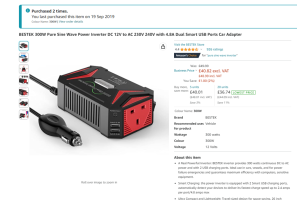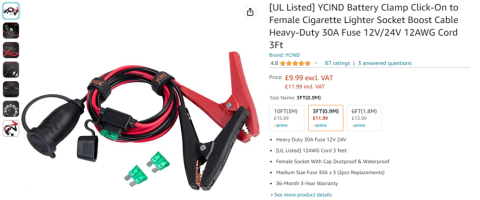Question,
I have a leisure battery (62Ah AGM) which powers LED lights, USB and the diesel heater. I see my local Aldi has a few small 300W inverters for £25. I don't normally use (EHU) AC unless in a campsite or at home (dehumidifier) but I'm wondering if it is worth the money to pop this in. My laptop for instance is 65W so I could use if for that.
What do you think? Worth the spend or don't waste my money. Obviously I could not run any large current draws like a kettle, or such.
Hmm, mixed reviews! I'd be sure to ensure all connections are secured/solder/recrimped prior to use.
stay away.
its not Pure Sine wave, (which you need for Laptops etc)
and the reveiws dont look good.
.....
i have a couple of these, they work great for all the small stuff, laptops, fridges etc etc .
years old now and still going strong.
..

plugging it into the 12v socket is good for upto 60W/80W or 100W max for short durations,
above 100w id move over to clamps, like these.




